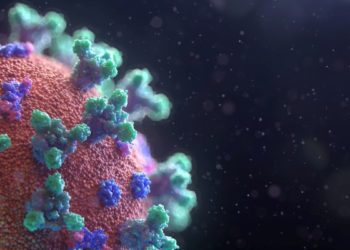Protection from SARS-CoV-2 re-infection may be diminished among elderly individuals
1. Prior infection with SARS-CoV-2 in the first wave (i.e. before June 2020) was linked to significant protection against reinfection in the second wave in the general population.
2. Protection from repeat SARS-CoV-2 infection was relatively weaker in older populations.
Evidence Rating Level: 2 (Good)
Study Rundown: Little is known about the protective immunity from SARS-CoV-2 repeat infections after an initial positive infection. In this population-level observational study, PCR testing records of those infected with SARS-CoV-2 during the first surge were tracked through to the second surge in Denmark. Infection rates during the second surge were compared among individuals with positive and negative PCR tests during the first surge. Analyses found that those who tested positive during the first surge were significantly less likely to have tested positive during the second surge compared to those who tested negative during the first surge. This protective effect was observed weakly in older populations where the likelihood of testing positive upon previous infection was notably higher compared to younger cohorts. There were no observed differences between sexes or the time between first infection and reinfection. This study is strengthened by its large subject pool and natural setting; this inclines the study to apply to practical public health settings. Limitations include the observational nature where one must assume similar characteristics (e.g., health behaviors, the likelihood of acquiring or seeking testing, exposure risk) among between groups and within groups over time; in other words, this study suggested but did not prove that prior infection directly prevented reinfection.
Click to read the study in The Lancet
Relevant Reading: What we know about covid-19 reinfection so far
In-Depth [retrospective cohort]: This study utilized a national surveillance dataset to access the SARS-CoV-2 PCR testing records of all those tested in Denmark between February 26th and December 21st, 2020. Only those tested during both the first and second surges were included in further analysis. The first surge was considered to be the period before June 2020, while the second surge was between Sept 1, 2020-Dec 31, 2020. Adjusted rate ratios with 95% CI intervals were derived from a Poisson regression as adjusted for sex, age group. The positivity rates were 2.20% (11 727 of 533 381) and 4.32% (150 159 of ~3 480 000) for the first and second surges, respectively. During the second surge, daily rates of infection were 5.35 positive tests per 100 000 people for those who previously tested positive in the first surge compared to 27.06 positive tests per 100 000 people for those who tested negative in the first surge. The adjusted relative risk of infection in the second surge was 0.195 (95% CI 0.155 – 0.246) when comparing those with a prior positive test to those with a negative test during the first surge. The overall protective effect against repeat infection was determined to be 78.8% (95% CI 74.9–82.1). The sub-analysis of those above the ages of 65 indicated a protective effect of only 47.1% (24.7–62.8) whereas all other younger cohorts reached levels above 80% (p <0.0001).
Image: PD
©2020 2 Minute Medicine, Inc. All rights reserved. No works may be reproduced without expressed written consent from 2 Minute Medicine, Inc. Inquire about licensing here. No article should be construed as medical advice and is not intended as such by the authors or by 2 Minute Medicine, Inc.







